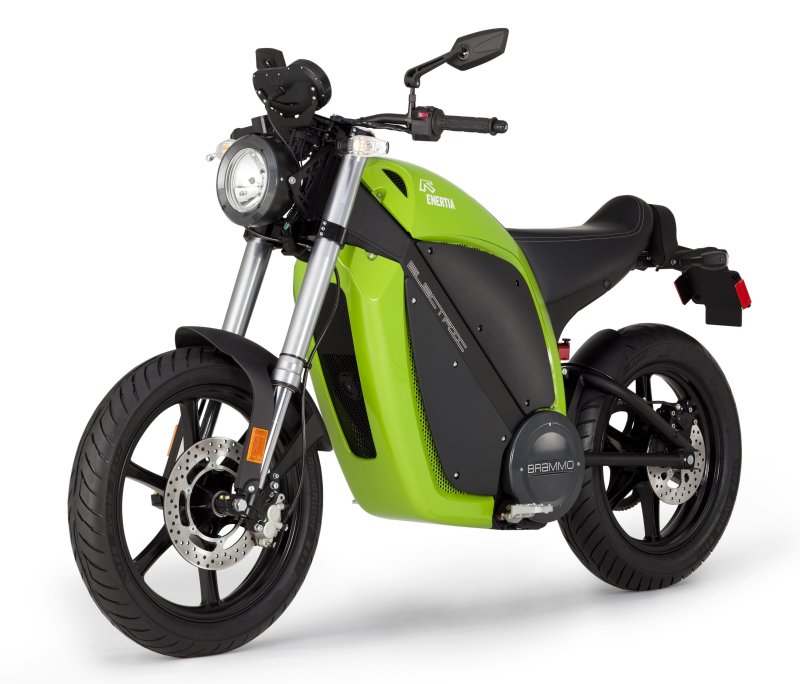
You may recall our coverage of the publicity coup Brammo (makers of the Enertia electric motorcycle) pulled off when they rode a pair of them from Detroit to Washington, D.C., retracing the route auto-company executives took when they went to beg for government loans earlier in 2009. The story was picked up by a huge number of media outlets, ending up with Brammo CEO and founder Craig Bramscher getting an invite to the Nation’s Capitol to meet Energy Secretary Stephen Chu. But what did they talk about?
“I asked Secretary Chu why [when it comes to subsidizing electric vehicles] two wheels are treated differently, but he didn’t respond directly.” Bramscher also asked about batteries, and why the credit is based on vehicle price and not battery price, as batteries are the priciest component of an electric or hybrid vehicle. Subsidize the battery, and the price of electric motorcycles would come way down.
But Brammo isn’t the sort of company to wait for the government to act. The 2010 Enertia, now being sold at select Bust Buy retailers, is priced at $7,995, a 1/3rd reduction from last year’s price (not counting a 10-percent Federal tax credit and other state incentives). Is it the last act of a desperately insolvent startup hoping to boost cash flow to satisfy angry investors?
Nope. Bramscher says the old pricing was based on the lower volumes Brammo was selling two years ago, and the goal has always been to get the price to $7,995 by 2011, a profitable price point selling 1000 units a year. Since then, the company has discovered it can probably turn out as many as 10,000 units a year from its plant in Ashland, Oregon. But once you start making a lot of product, you need to sell them somewhere … which is why Brammo approached Best Buy. But why would you want to sell a motorcycle at a home electronics store?
“The first few times we took the bike out [to show consumers], we got motorcyclists stopping, but seven or eight out of ten people interested in the bike were aspirational buyers, not motorcyclists,” said Bramscher. “They want something easy to ride. They’d say ‘I’ve always wanted a bike like this.'” Another angle is the plethora of other brands competing for attention in a shrinking market: “We thought it would get lost in a traditional motorcycle dealer.” And traditional buyers are jaded about electric bikes anyway: “If you asked an enthusiast, he’d say even if it was viable, why would you want it?”
“It” is the Enertia. It’s a standard-style motorcycle with lots of nice components: Brembo brakes, Marzocchi inverted forks and cast wheels (a 17-inch in back and an 18-inch up front). It’s clearly designed by motorcyclists, as it handled and went well enough for an impressive podium finish at the Isle of Man TTXGP in June. In stock trim, it will go around 42 miles at an around-town pace, and the 324-pound bike’s top speed is over 60 mph, depending on rider weight. It’s made in the USA at the Brammo HQ in Ashland, and the company uses as many North American suppliers-about 45% of the bike not counting the Chinese-made batteries-as possible. Bramscher is as patriotic as the next guy, but that doesn’t seem to be his only reason for home-sourcing components: “the closer you can be to your vendors, the better.” It leads to a ” flexible and agile supply chain,” which will let Brammo build between 100 and 200 units in January.
Selling the finished product at Best Buy makes more sense for a product like the Enertia, which has limited speed and range compared to even a 200cc scooter, but offers lower operating costs and is unintimidating to new riders because of its clean, silent, and easy-to-ride nature. “When you realize what an electric vehicle is, it’s much more like a transportation appliance”, says Bramscher. “So who’s best suited to selling new technology? It wasn’t Costco, it wasn’t Sears, it was Best Buy.” The retail giant also has the tech-savvy Geek Squad to help customers get up to speed with new technology. Brammo plans to expand its product line with what Bramscher calls an “anti-scooter” that won’t require a motorcycle endorsement on the rider’s license.
“It wasn’t easy,” to make the deal between Brammo and Best Buy, according to Bramscher. Brammo hired a consultant (Kari Prager, who owns two multi-brand dealerships in the S.F. Bay area) to help Best Buy get set up as a motorcycle dealer, and now five stores in California and Oregon are selling the bikes, with a sixth store to be opened soon. In many other states, consumers can buy directly from the Brammo website. MD looks forward to getting a ride on the Brammo in the near future.





